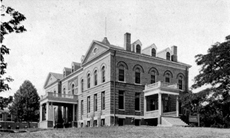Holdings:
* UM-System
* Columbia
All illustrations in this exhibit are thumbnails. Please left-click on these illustrations to bring up larger images.
Touring the Campus in 1900
A walk around the campus shows the club houses or dormitories,
an observatory, the Agriculture buildings, the Experiment Station,
a greenhouse, the Law building, Chemistry Laboratory, President's House,
a museum, the Agriculture College, the Engineering College, the Mechanic
Arts building, the Power House, Academic Hall (now called Jesse Hall),
the Medical building and Parker Hospital. Of those buildings, nine
were built in the ten years before the turn of the century and several
in the year 1900.
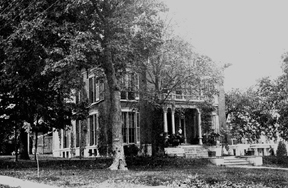
President's House, ca. 1900
(University Archives, C:0/47/2, Box 1, FF 12)
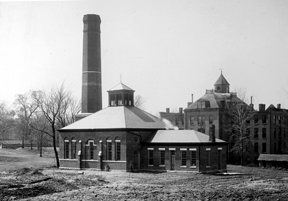
Power House
(University Archives, C:0/47/12, Box 2, FF 3)
There were 25 labs for science and technology and 5 drawing rooms.
Entomology Lab, ca. 1900
(University Archives, C:0/47/1, Box 1, OSF)
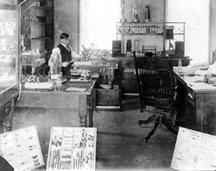
Agriculture Lab, 1903
(University Archives, C:0/47/1, Box 1, OSF)

The system of exhaust ventilation was so efficient in the Chemical lab that it changed the air every 10 minutes.
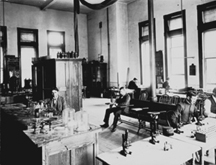
Chemical Lab, ca. 1900
(University Archives, C:0/47/12, Box 1, FF 36)
Each compartment of the Horticulture Laboratory was heated by steam, so it was possible to have different temperatures and thus, grow plants that require various degrees of heat.
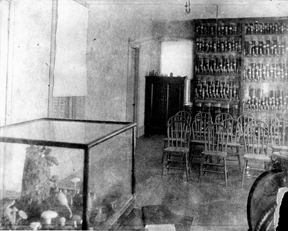
Horticulture classroom, ca. 1900
(University Archives, C:0/47/12, Box 1, FF 12)
One campus feature that does not exist today is Chalybeate Spring.
The mineral spring rose north of the Columns and was surrounded by a pagoda.
The spring was a popular attraction and was rumored to have healing properties.
The Executive Committee of the Board of Curators ordered its removal in 1903, as Francis
Quadrangle was further developed.
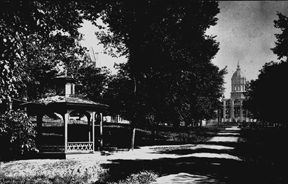
Chalybeate Spring, ca. 1900
(University Archives, C:0/3/8, Box 4, FF 4)
Parker Memorial Hospital
Parker Memorial Hospital was one of the buildings completed in 1900. The corner stone was laid on December 19, 1899 and it was ready for use in 1900.
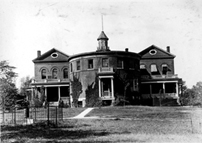
Parker Hospital, Back and Front Views
(University Archives, C:0/3/7; C:0/47/1 Bulletin, 1903)
William Parker gave $15,000 for the construction of this hospital, with the understanding that the university raise the additional $10,000 necessary to complete the building. The Missouri legislature complied, and several architects began working on the designs. There are several interesting features to the structure and accolades belong to its architects, including Miss Mary L. Hale.
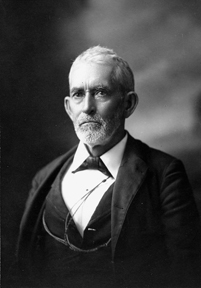
William Parker
(University Archives, C:0/47/12, Box 2, FF 24)
In addition to providing better medical care for the students, Parker Hospital also served as a teaching institution. It was the only hospital owned and managed by the state of Missouri. Beginning with 1899-1900, there was a dramatic increase in the number of students studying medicine. This was due in part to the new hospital but also to the new equipment and more specialized faculty.
Library
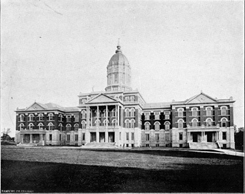
Academic Hall, now known as Jesse Hall
(University Archives, 1900 Savitar)
The library did not have its own building but was housed in the west
wing of Academic Hall. With the exception of a few materials on loan,
the library was a total loss, after the fire in 1892. James Thayer
Gerould was hired as the Librarian in 1900, and he brought professionalism
and expertise to the library. He was a graduate of Dartmouth with
experience at Columbia University. Some date the beginning of the
modern University of Missouri library from his tenure (Viles 254). He completed
a card catalogue system and modernized the facility so that books were
accessible to students. With the deposit of $3, any student was now
allowed to borrow books to use outside the library.
